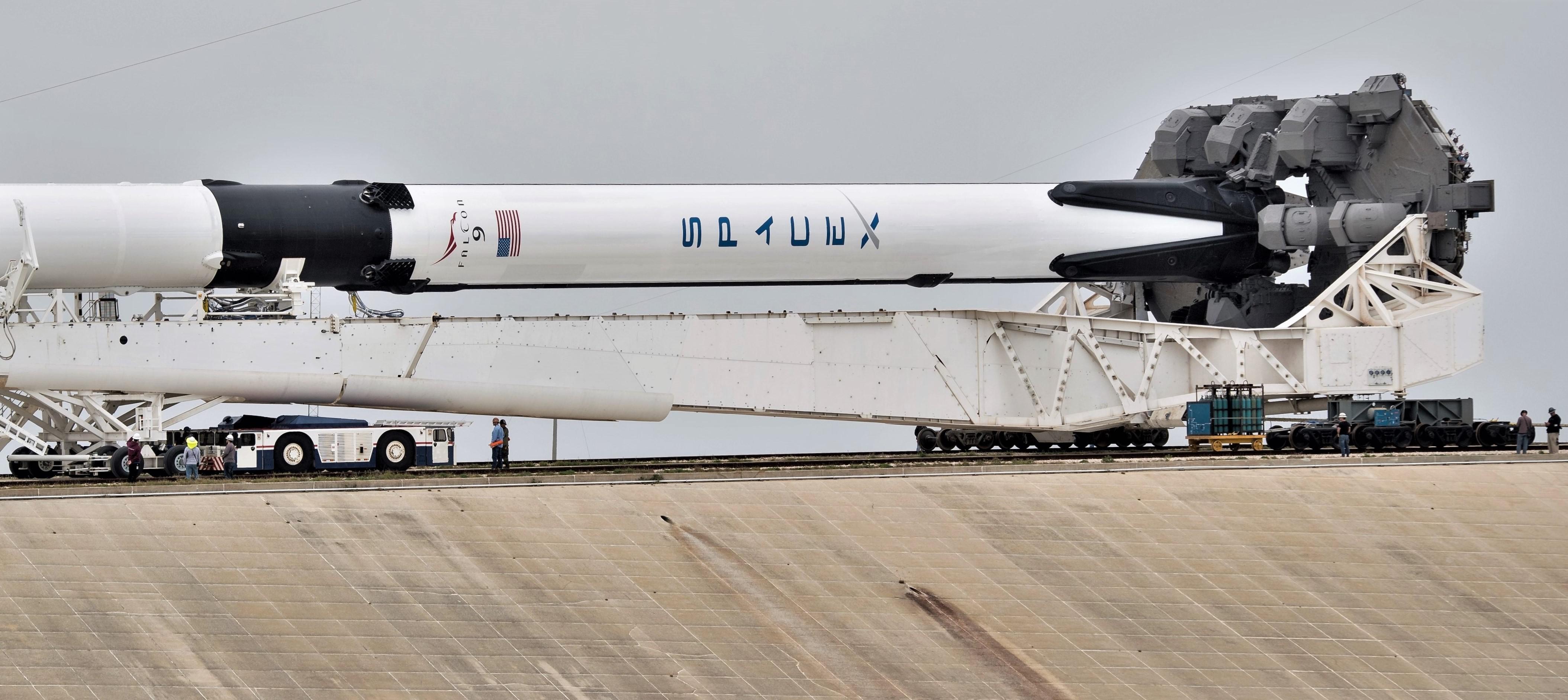

News
SpaceX teases extreme Falcon 9 launch cadence goals in Starship planning doc
Published as part of an August 2019 environmental assessment (EA) draft for Starship’s prospective Pad 39A launch facilities, SpaceX revealed plans for a truly mindboggling number of annual Falcon 9 and Falcon Heavy launches by 2024.
As environmental planning documents, the figures should be taken with a large grain of salt and be treated as near-absolute ceilings rather than practical goals. Nevertheless, SpaceX revealed plans for its two Florida launch sites (LC-40 and LC-39A) to ultimately support as many as 70 annual launches of Falcon 9 and Heavy by 2024, less than five years from now.
Simply put, even the most dogmatic fan would have to balk at least a little bit at the numbers SpaceX suggested in its Starship EA draft. More specifically, SpaceX apparently has plans to support as many as 20 annual Falcon 9/Heavy launches from Pad 39A and an incredible 50 annual Falcon 9 launches from LC-40 as early as 2024.
“SpaceX plans to increase the Falcon launch frequency to 20 launches per year from LC-39A and up to 50 launches per year from LC-40 by the year 2024. However, as Starship/Super Heavy launches gradually increase to 24 launches per year, the number of launches of the Falcon would decrease.“
–SpaceX, Starship Environmental Assessment Draft, August 2019

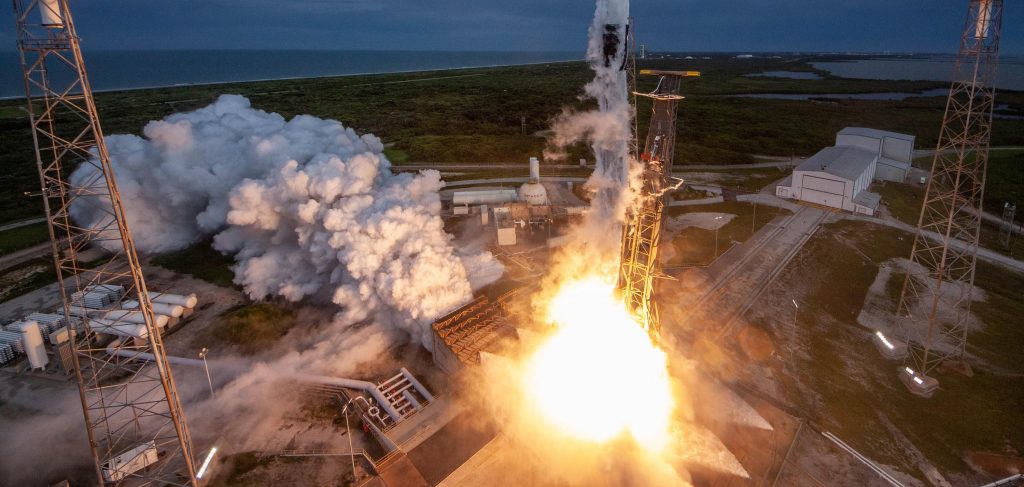
Two obvious options
Given just how significant of an increase a 70-launch annual cadence would be for SpaceX relative to their current record of 21 launches, it’s entirely possible that these numbers are really just a pipe dream included in a pending environmental assessment to hedge bets just in case a similar launch frequency is achieved over the next five years.
On the other hand, it’s possible that SpaceX – just now coming into the ability to reliably achieve a much higher cadence – has coincidentally become payload-constrained at almost the same time, meaning that the company’s customers’ payloads just aren’t ready for launch. This would explain, for example, why SpaceX has only launched 10 times this year when the company had already completed 15 launches by August 2018.
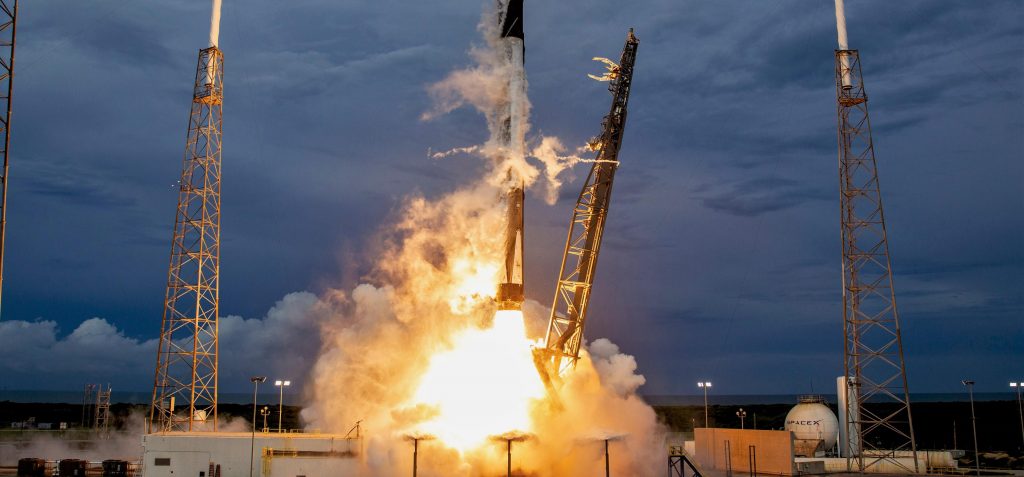
Additionally, it can be almost unequivocally assumed that all but 15-20 of those supposed 70 annual launches would come from SpaceX’s own internal demand for Starlink launch capacity. Assuming no improvements between now and 2024, 50 Falcon 9 launches could place as many as 3000 Starlink satellites in orbit in a single year, equivalent to more than 25% of the entire proposed ~11,800-satellite constellation.
Barring regulatory changes to US Federal Communications Commission (FCC) and International Telecommunication Union (ITU) requirements, SpaceX must launch at least half of all Starlink satellites (~5900) by November 2024 and finish launching the remaining ~5900 by November 2027. If SpaceX fails to reach those deployment milestones, the company runs the risk of losing Starlink’s domestic and international licenses to operate.
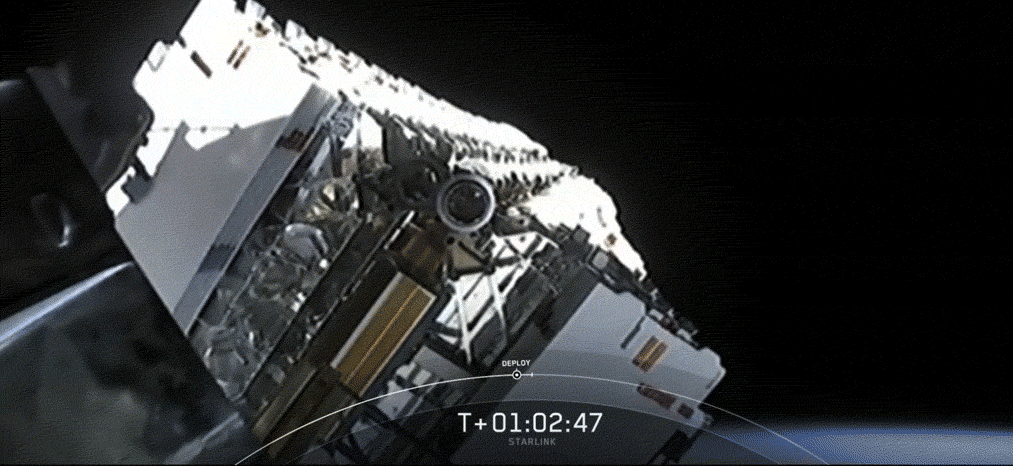
This would help to explain why SpaceX says that it’s planning to reach a maximum cadence of 70 annual launches “by 2024”, given that 2024 will be a pivotal year in the eyes of regulations currently in effect for Starlink.
Starship confusion
As noted in the quote above, SpaceX plans to eventually phase out Falcon 9 and Heavy launches as the company’s next-generation Starship and Super Heavy launch vehicle gradually comes online, proves itself reliable, and begins operational launch activities. According to SpaceX, given just how much mass Starship can nominally launch relative to both Falcon 9 and Heavy, far fewer launches will be needed to accomplish the tasks that would otherwise require several times more launches of SpaceX’s smaller vehicles.
SpaceX’s initial Environmental Assessment for Starship launches from Pad 39A caps the rocket’s maximum cadence at 24 annual launches. Oddly, this directly contradicts the goals set for Starship (formerly BFR) by CEO Elon Musk and SpaceX more generally. By building a launch vehicle that is fully and rapidly reusable, the goal has long been to deliver cheap, aircraft-like access to orbit at a completely unprecedented scale.
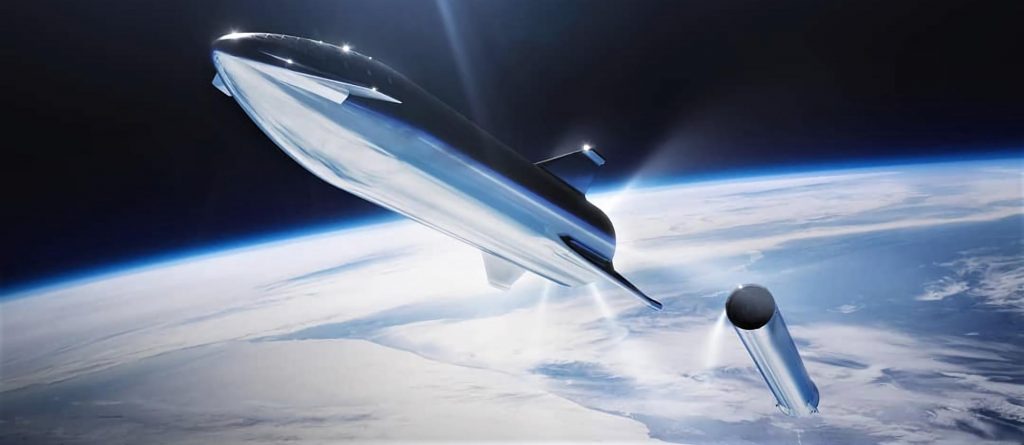
This would technically mean that SpaceX could actually dramatically increase its launch cadence without increasing costs, allowing the company to perform currently nonsensical missions where Starship might launch payloads weighing just 5-10% of its total payload capacity. Airline operations routinely do things of a similar nature, sometimes flying just a fraction of their maximum passenger load to destinations for a variety of reasons.
Additionally, SpaceX has consistently indicated that Starship will rely heavily on orbital refueling to accomplish its ultimate deep space ambitions. Previous presentations from Elon Musk have shown that launches to the Mars or Moon with significant payload would require no fewer than five separate tanker launches and orbital refuelings, all of which would classify as one of the 24 annual launches SpaceX has described in its August 2019 EA draft. On their own, launching two Starships to Mars with 100 tons of payload each would require no fewer than 10-12 launches.

Ultimately, it’s unwise to draw any substantial conclusions from an Environmental Assessment like the one the above information has been taken from. This 39A-specific EA also ignores the possibility of a similar launch facility being developed in Boca Chica, Texas, which SpaceX explicitly acknowledges.
This particular draft is also the first Starship-related EA ever filed by SpaceX, and the company may thus be treating it more as a bare minimum with the intention of eventually pursuing far more ambitious launch rates once Starship has been established.
Check out Teslarati’s Marketplace! We offer Tesla accessories, including for the Tesla Cybertruck and Tesla Model 3.
Elon Musk
Tesla reveals it is using AI to make factories more sustainable: here’s how
Tesla is using AI in its Gigafactory Nevada factory to improve HVAC efficiency.

Tesla has revealed in its Extended Impact Report for 2024 that it is using Artificial Intelligence (AI) to enable its factories to be more sustainable. One example it used was its achievement of managing “the majority of the HVAC infrastructure at Gigafactory Nevada is now AI-controlled” last year.
In a commitment to becoming more efficient and making its production as eco-friendly as possible, Tesla has been working for years to find solutions to reduce energy consumption in its factories.
For example, in 2023, Tesla implemented optimization controls in the plastics and paint shops located at Gigafactory Texas, which increased the efficiency of natural gas consumption. Tesla plans to phase out natural gas use across its factories eventually, but for now, it prioritizes work to reduce emissions from that energy source specifically.
It also uses Hygrometric Control Logic for Air Handling Units at Giafactory Berlin, resulting in 17,000 MWh in energy savings each year. At Gigafactory Nevada, Tesla saves 9.5 GWh of energy through the use of N-Methylpyrrolidone refineries when extracting critical raw material.
Perhaps the most interesting way Tesla is conserving energy is through the use of AI at Gigafactory Nevada, as it describes its use of AI to reduce energy demand:
“In 2023, AI Control for HVAC was expanded from Nevada and Texas to now include our Berlin-Brandenburg and Fremont factories. AI Control policy enables HVAC systems within each factory to work together to process sensor data, model factory dynamics, and apply control actions that safely minimize the energy required to support production. In 2024, this system achieved two milestones: the majority of HVAC infrastructure at Gigafactory Nevada is now AI-controlled, reducing fan and thermal energy demand; and the AI algorithm was extended to manage entire chiller plants, creating a closed-loop control system that optimizes both chilled water consumption and the energy required for its generation, all while maintaining factory conditions.”
Tesla utilizes AI Control “primarily on systems that heat or cool critical factory production spaces and equipment.” AI Control communicates with the preexisting standard control logic of each system, and any issues can be resolved by quickly reverting back to standard control. There were none in 2024.
Tesla says that it is utilizing AI to drive impact at its factories, and it has proven to be a valuable tool in reducing energy consumption at one of its facilities.
Elon Musk
Tesla analysts believe Musk and Trump feud will pass
Tesla CEO Elon Musk and U.S. President Donald Trump’s feud shall pass, several bulls say.

Tesla analysts are breaking down the current feud between CEO Elon Musk and U.S. President Donald Trump, as the two continue to disagree on the “Big Beautiful Bill” and its impact on the country’s national debt.
Musk, who headed the Department of Government Efficiency (DOGE) under the Trump Administration, left his post in May. Soon thereafter, he and President Trump entered a very public and verbal disagreement, where things turned sour. They reconciled to an extent, and things seemed to be in the past.
However, the second disagreement between the two started on Monday, as Musk continued to push back on the “Big Beautiful Bill” that the Trump administration is attempting to sign into law. It would, by Musk’s estimation, increase spending and reverse the work DOGE did to trim the deficit.
Every member of Congress who campaigned on reducing government spending and then immediately voted for the biggest debt increase in history should hang their head in shame!
And they will lose their primary next year if it is the last thing I do on this Earth.
— Elon Musk (@elonmusk) June 30, 2025
President Trump has hinted that DOGE could be “the monster” that “eats Elon,” threatening to end the subsidies that SpaceX and Tesla receive. Musk has not been opposed to ending government subsidies for companies, including his own, as long as they are all abolished.
How Tesla could benefit from the ‘Big Beautiful Bill’ that axes EV subsidies
Despite this contentious back-and-forth between the two, analysts are sharing their opinions now, and a few of the more bullish Tesla observers are convinced that this feud will pass, Trump and Musk will resolve their differences as they have before, and things will return to normal.
ARK Invest’s Cathie Wood said this morning that the feud between Musk and Trump is another example of “this too shall pass:”
BREAKING: CATHIE WOOD SAYS — ELON AND TRUMP FEUD “WILL PASS” 👀 $TSLA
She remains bullish ! pic.twitter.com/w5rW2gfCkx
— TheSonOfWalkley (@TheSonOfWalkley) July 1, 2025
Additionally, Wedbush’s Dan Ives, in a note to investors this morning, said that the situation “will settle:”
“We believe this situation will settle and at the end of the day Musk needs Trump and Trump needs Musk given the AI Arms Race going on between the US and China. The jabs between Musk and Trump will continue as the Budget rolls through Congress but Tesla investors want Musk to focus on driving Tesla and stop this political angle…which has turned into a life of its own in a roller coaster ride since the November elections.”
Tesla shares are down about 5 percent at 3:10 p.m. on the East Coast.
Elon Musk
Tesla scrambles after Musk sidekick exit, CEO takes over sales
Tesla CEO Elon Musk is reportedly overseeing sales in North America and Europe, Bloomberg reports.

Tesla scrambled its executives around following the exit of CEO Elon Musk’s sidekick last week, Omead Afshar. Afshar was relieved of his duties as Head of Sales for both North America and Europe.
Bloomberg is reporting that Musk is now overseeing both regions for sales, according to sources familiar with the matter. Afshar left the company last week, likely due to slow sales in both markets, ending a seven-year term with the electric automaker.
Tesla’s Omead Afshar, known as Elon Musk’s right-hand man, leaves company: reports
Afshar was promoted to the role late last year as Musk was becoming more involved in the road to the White House with President Donald Trump.
Afshar, whose LinkedIn account stated he was working within the “Office of the CEO,” was known as Musk’s right-hand man for years.
Additionally, Tom Zhu, currently the Senior Vice President of Automotive at Tesla, will oversee sales in Asia, according to the report.
It is a scramble by Tesla to get the company’s proven executives over the pain points the automaker has found halfway through the year. Sales are looking to be close to the 1.8 million vehicles the company delivered in both of the past two years.
Tesla is pivoting to pay more attention to the struggling automotive sales that it has felt over the past six months. Although it is still performing well and is the best-selling EV maker by a long way, it is struggling to find growth despite redesigning its vehicles and launching new tech and improvements within them.
The company is also looking to focus more on its deployment of autonomous tech, especially as it recently launched its Robotaxi platform in Austin just over a week ago.
However, while this is the long-term catalyst for Tesla, sales still need some work, and it appears the company’s strategy is to put its biggest guns on its biggest problems.
-

 Elon Musk1 day ago
Elon Musk1 day agoTesla investors will be shocked by Jim Cramer’s latest assessment
-

 News6 days ago
News6 days agoTesla Robotaxi’s biggest challenge seems to be this one thing
-

 News2 weeks ago
News2 weeks agoTesla’s Grok integration will be more realistic with this cool feature
-

 Elon Musk2 weeks ago
Elon Musk2 weeks agoElon Musk slams Bloomberg’s shocking xAI cash burn claims
-

 News2 weeks ago
News2 weeks agoTesla China roars back with highest vehicle registrations this Q2 so far
-

 News2 weeks ago
News2 weeks agoTexas lawmakers urge Tesla to delay Austin robotaxi launch to September
-

 News2 weeks ago
News2 weeks agoTesla dominates Cars.com’s Made in America Index with clean sweep
-

 Elon Musk1 week ago
Elon Musk1 week agoFirst Look at Tesla’s Robotaxi App: features, design, and more




















